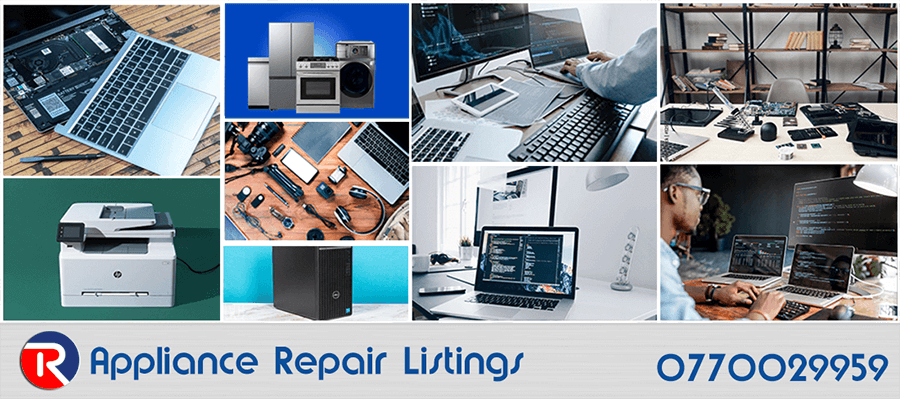
Upgrading Your Laptop’s Graphics Card: Is It Possible?
By Repair.co.ke
For gamers, video editors, and graphic designers, a laptop’s graphics card is often the heart of the machine. It determines how smoothly games run, how quickly renders complete, and whether high-resolution visuals display without a hitch. As software demands increase, many users wonder if upgrading their laptop’s graphics card is a viable way to boost performance. Unlike desktop PCs, where swapping out a GPU (graphics processing unit) is relatively straightforward, laptops present unique challenges. In this article, we’ll explore whether upgrading a laptop’s graphics card is possible, the limitations involved, and alternative solutions to enhance your laptop’s graphical capabilities.
Understanding Laptop Graphics Cards
Most laptops come with one of two types of graphics solutions: integrated or dedicated. Integrated graphics, such as Intel Iris Xe or AMD Radeon Vega, are built into the laptop’s CPU and share system RAM. They’re energy-efficient but lack the power needed for demanding tasks like gaming or 3D modeling. Dedicated graphics cards, like NVIDIA GeForce or AMD Radeon RX series, have their own VRAM and offer superior performance for graphics-intensive applications.
The key difference between laptops and desktops lies in how these components are installed. Desktop GPUs are typically modular, fitting into PCIe slots that allow easy upgrades. In laptops, however, the graphics card is often soldered directly onto the motherboard or integrated into the CPU, making upgrades difficult or impossible. This design prioritizes portability and power efficiency but limits user flexibility.
Can You Upgrade Your Laptop’s Graphics Card?
In most cases, upgrading a laptop’s graphics card is not feasible. Here’s why:
-
Soldered GPUs: The majority of modern laptops, especially ultrabooks and thin-and-light models, have GPUs soldered onto the motherboard. This means the graphics chip is physically fused to the board, and removing or replacing it requires advanced soldering skills and specialized equipment—often costing more than a new laptop.
-
Proprietary Designs: Even in laptops with dedicated GPUs, manufacturers like Dell, HP, or ASUS use custom designs for their motherboards. Unlike desktops, there’s no universal standard for laptop GPU slots, so finding a compatible replacement is nearly impossible.
-
Power and Cooling Constraints: Graphics cards require specific power delivery and cooling systems. A more powerful GPU may exceed your laptop’s power supply capacity or generate too much heat for the cooling system to handle, leading to thermal throttling or hardware damage.
However, there are rare exceptions. Some high-end gaming laptops or mobile workstations, like certain models from Alienware, MSI, or Clevo, use a modular GPU format called MXM (Mobile PCI Express Module). These laptops allow GPU upgrades, but even then, compatibility is limited to specific modules supported by the manufacturer, and MXM cards are expensive and hard to find.
Alternatives to Upgrading Your Laptop’s Graphics Card
If upgrading your laptop’s GPU isn’t an option, there are several ways to improve graphical performance:
-
External GPU (eGPU) Enclosures: An eGPU connects a desktop-grade graphics card to your laptop via a Thunderbolt 3 or 4 port. Brands like Razer, AORUS, and Blackmagic offer enclosures that house a GPU, providing a significant performance boost for gaming or creative work. However, eGPUs are costly (starting at $300 plus the cost of the GPU), require a compatible Thunderbolt port, and may introduce slight performance bottlenecks due to bandwidth limitations.
-
Optimize Software Settings: Lowering in-game graphics settings, updating GPU drivers, or using performance-enhancing software like NVIDIA GeForce Experience can squeeze more performance out of your existing GPU. Regular driver updates often include optimizations for new games or applications.
-
Upgrade Other Components: While not a direct GPU upgrade, increasing your laptop’s RAM or swapping a hard drive for an SSD can improve overall system performance, reducing bottlenecks that affect graphical output. For example, 16GB of RAM is often a sweet spot for gaming and multitasking.
-
Consider a New Laptop: If your laptop’s GPU is significantly outdated, investing in a new machine with a modern graphics card may be more cost-effective. Current models with NVIDIA RTX 40-series or AMD RX 7000-series GPUs offer excellent performance for both gaming and professional applications.
Is It Worth Trying to Upgrade?
For most users, attempting to upgrade a laptop’s graphics card is neither practical nor cost-effective. Unless you own a rare model with an MXM slot or are willing to invest in an eGPU setup, the limitations of laptop design make GPU upgrades challenging. Instead, focus on optimizing your current setup or saving for a new laptop that meets your performance needs.
At Repair.co.ke, we specialize in helping you get the most out of your laptop. Whether you need advice on hardware upgrades, software optimization, or repairs, our team is here to guide you. Contact us today to explore your options and keep your laptop running at its best.